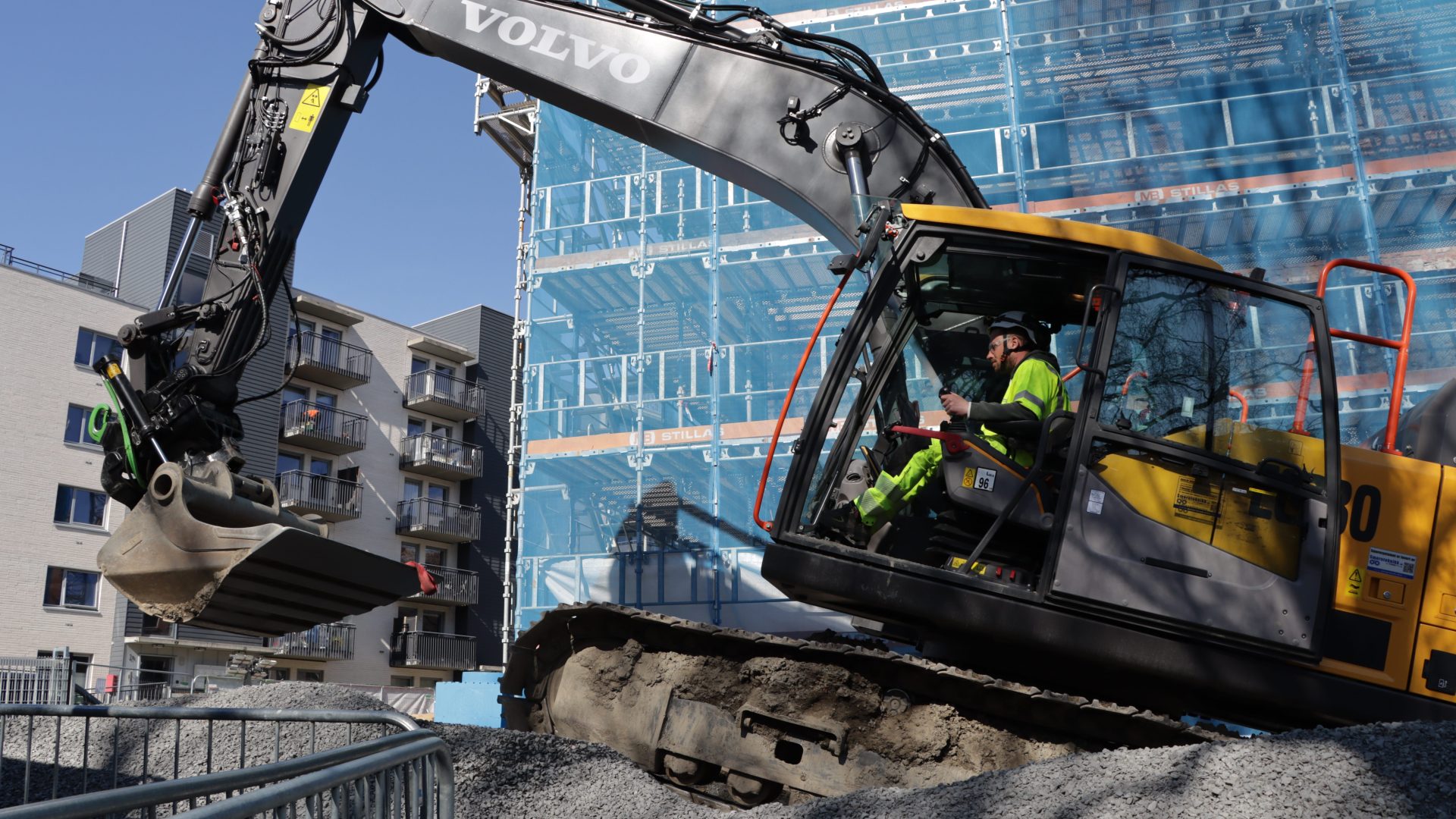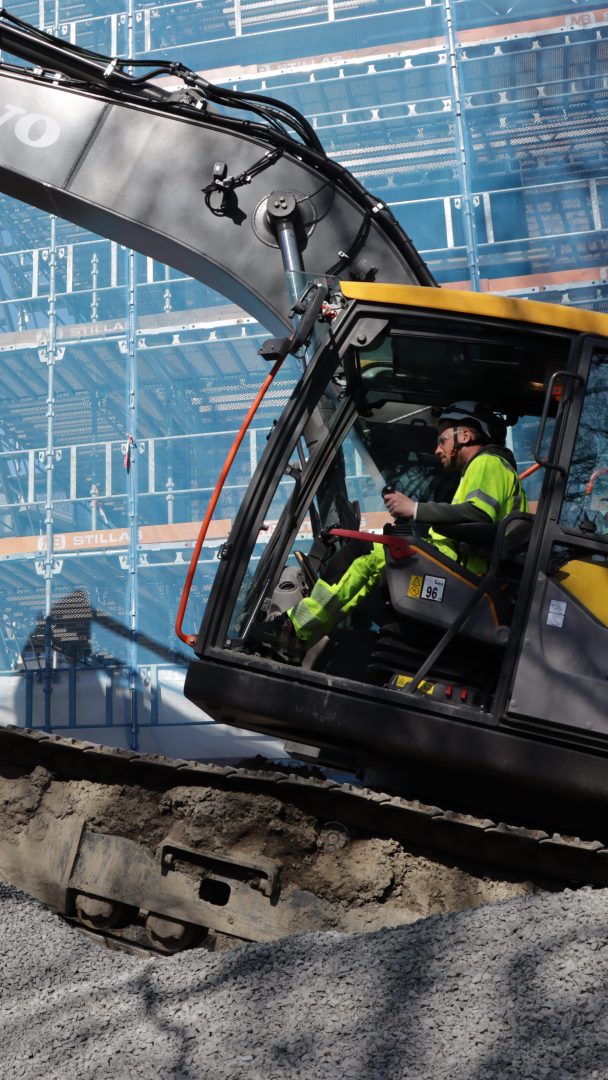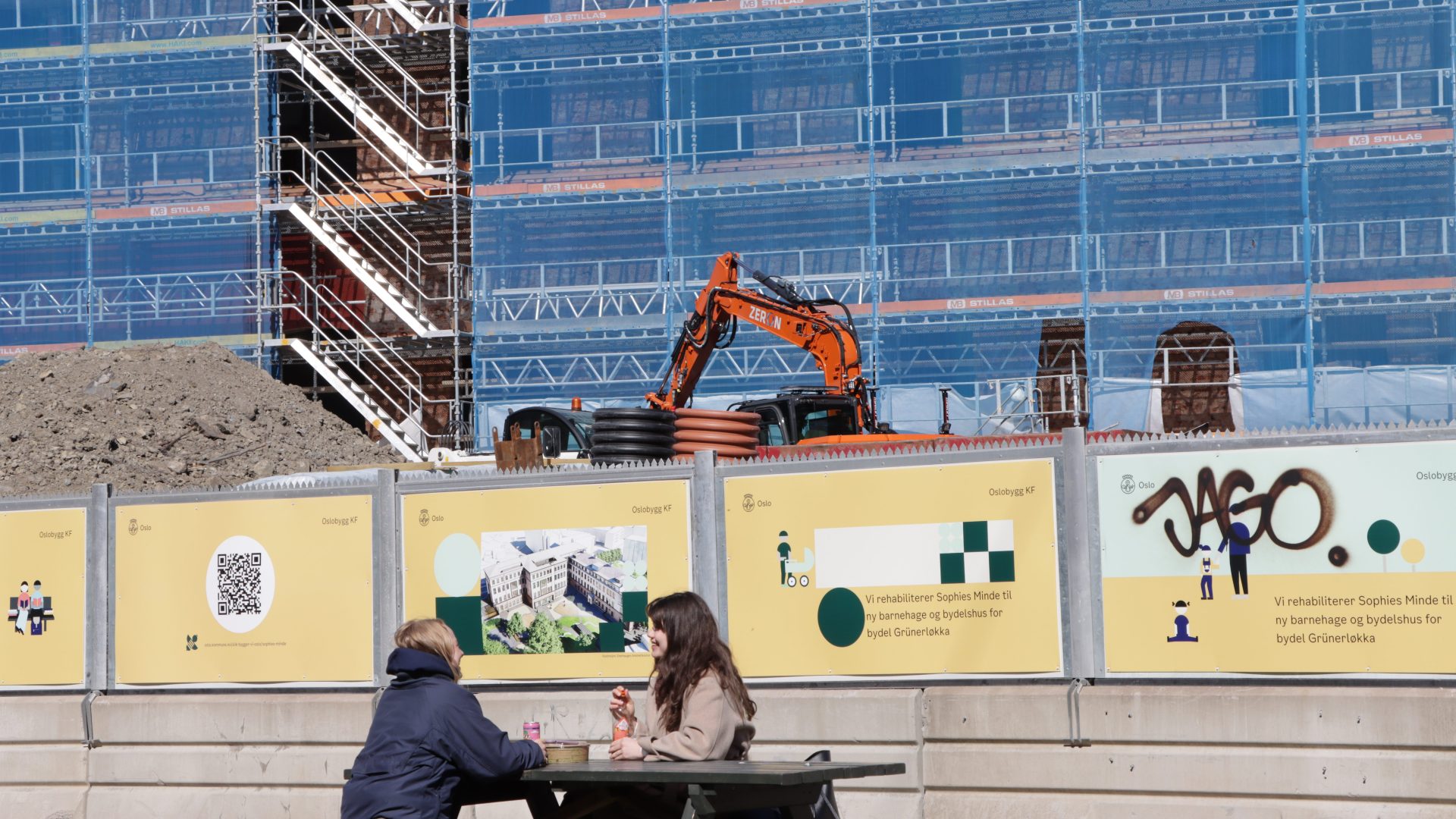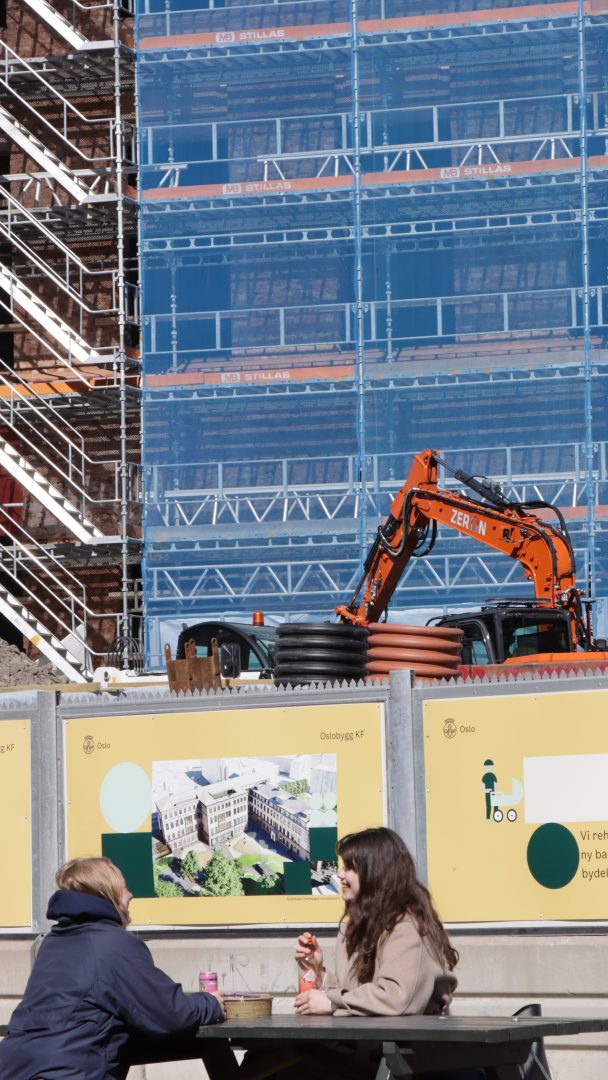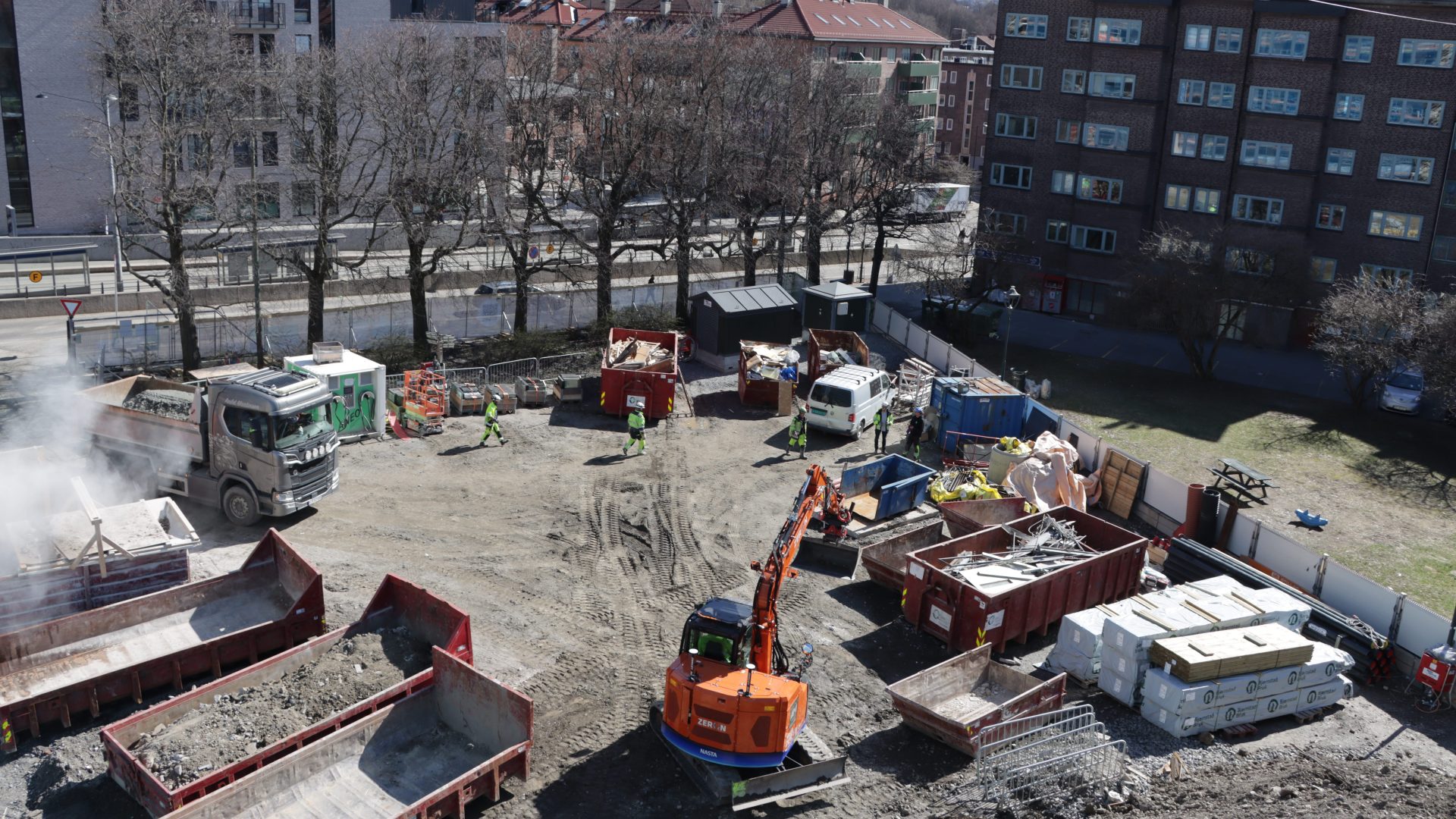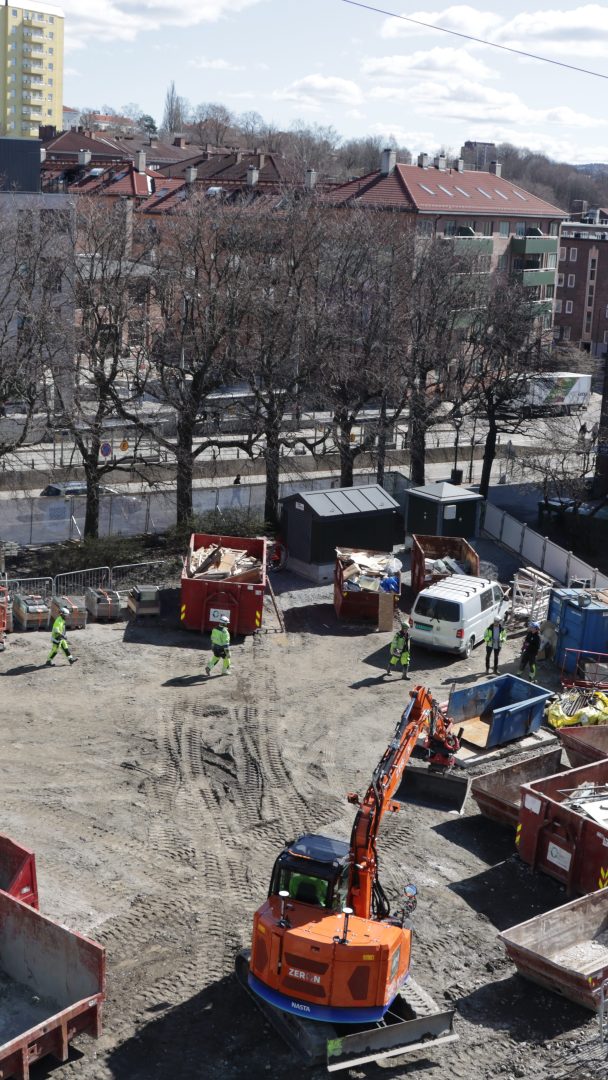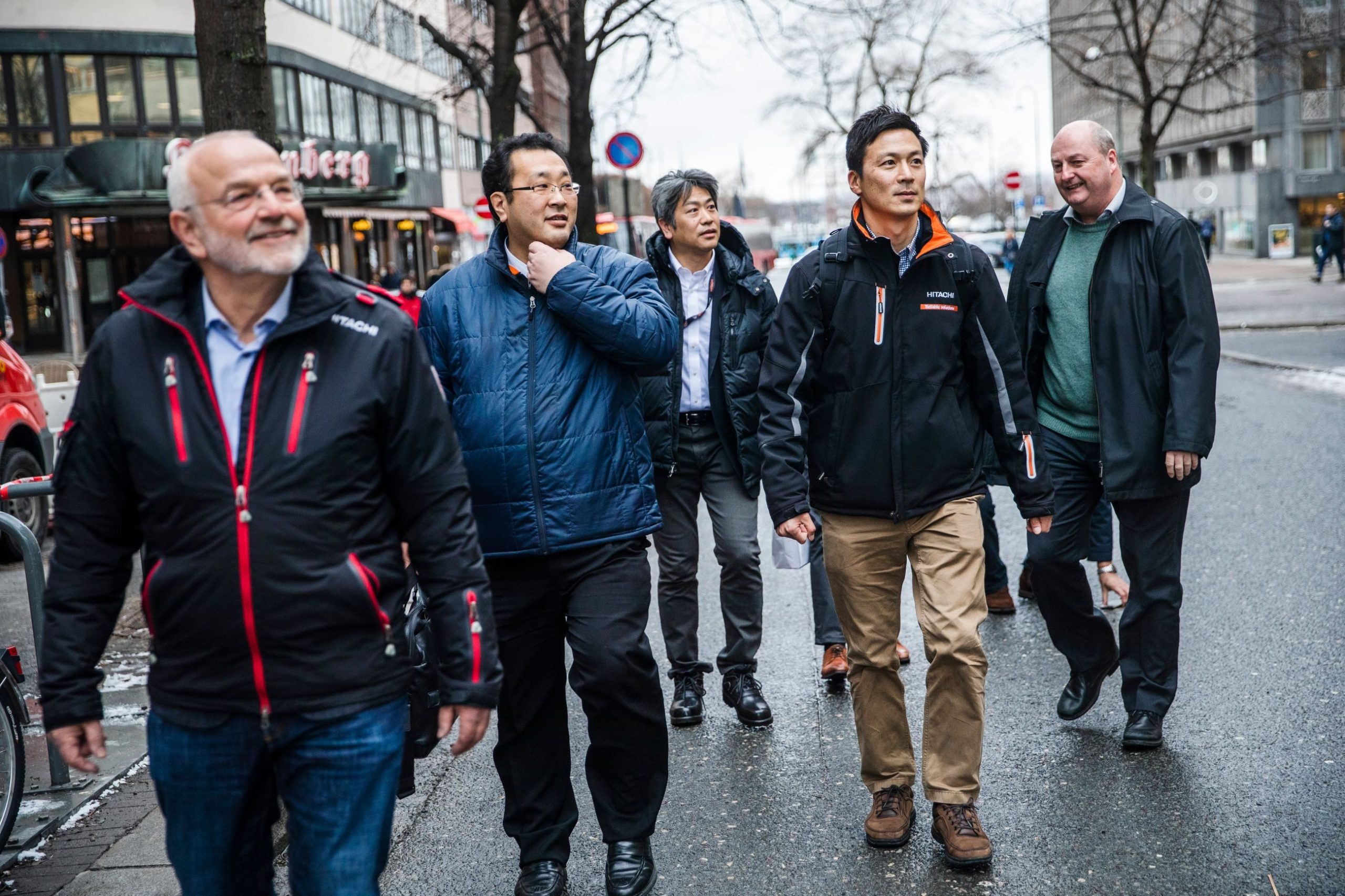Large 25-ton excavators push their way forward behind the fences surrounding Sophies Minde, a stone’s throw from the bustling Carl Berners square in Oslo. On the lawn on the other side of the construction fence, two girls enjoy their packed lunches in what will soon become a beautiful park with a children’s playground. The noise from the construction site is no obstacle.
Is this what low greenhouse gas emissions sound like?
A former hospital on Trondheimsveien in Oslo with an orthopedic department. Now it is being converted into a district administration and a kindergarten.
There will also be a health center, prenatal care and community services for the district’s residents. Approximately 13,000 square meters will be renovated.
The outdoor area will also be upgraded as part of the project. Around 7,100 square meters of outdoor play area will be established, which will belong to the kindergarten, and it is intended that the outdoor areas will become a valuable supplement for the local residents.
The renovation is expected to be completed in the first half of 2026.
Less noise, more customers
«We notice the construction site mostly because many workers come in here,» laughs Cadla Liao, assistant manager at Kaffebrenneriet. Holding a tray, she clears cups outside the coffee shop across from the tram stop at Carl Berner. The sun is shining, on what feels like one of the first summer days this year.
«The first days were very noisy, but not so much anymore,» says Liao. She is pleased that the new community center in Grünerløkka district is being built with zero-emission machines, as she has learned from the many workers who drop by.
«If it weren’t for the electric excavators, it would be much noisier, so that’s good!»
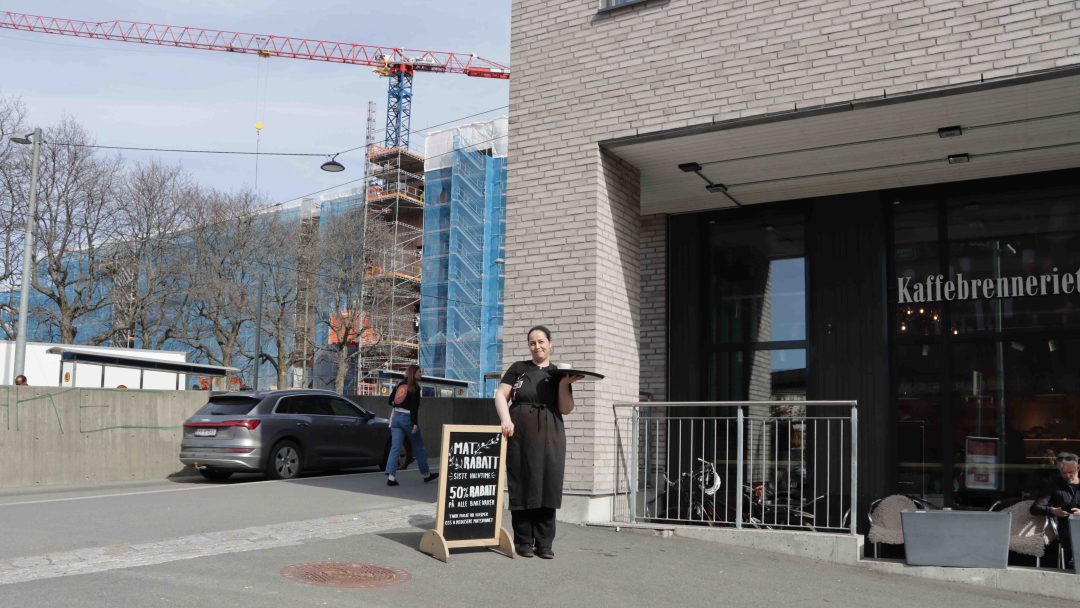
Cadla Liao in front of her coffee shop, with the construction site across the street
«For the neighbors, it’s a great advantage. Zero-emission machines mean less noise and local air pollution,» says Mathias Kolsaker, project manager for Special Projects at Oslobygg KF. The project has achieved a reduction of 207 tons of CO2 equivalents by making the construction project emission-free, compared to if it had been carried out with fossil-fuel construction machinery.
«Now we only emit 16 tons of CO2,» says Kolsaker, explaining that this is because Norway’s electricity mix includes power bought from abroad. If the site were fossil-free, emissions would be 82 tons. Fossil-free construction sites allow the use of biofuels, while zero-emission sites only use energy that does not lead to emissions on the site, which in this context typically means electricity.
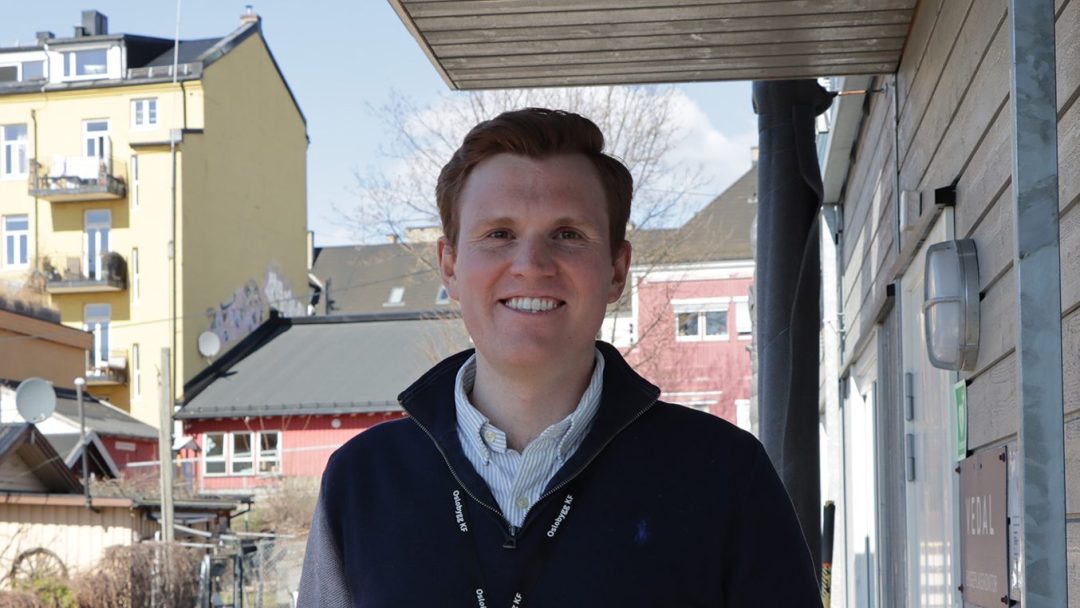
Mathias Kolsaker, Oslobygg KF
Requirements behind the goals
To meet it’s climate goals, the City of Oslo has set a requirement for the use of zero-emission construction machinery in tenders for new city-owned construction projects. It has been a long road, but the results are now visible in several places around the city.
In 2019 the first zero-emission construction site in Oslo broke ground, when St. Olavs gate in Oslo city center was upgraded. Since then, several small and large projects have followed. Currently, zero-emission construction is taking place at both Stovner inndoor swimming pool and Sophies Minde, among others.
Back in 2016, when the city challenged the industry to make construction sites fossil-free, many were skeptical. However, the construction industry has been supportive and proactive, according to Heidi Sørensen, director of the Climate Agency.
«Through solid collaboration where the city mobilized broadly, several city agencies have gotten their suppliers to build emission-free, from Oslobygg constructing the Lambertseter sports facility fossil-free as early as 2016, to the Agency for Water and Wastewater Services and the Cemetery Agency now setting requirements for contractors.»
As of 2023, 77% of the city’s own construction jobs are completely emission-free, contributing significantly to the municipality’s own emissions reduction.
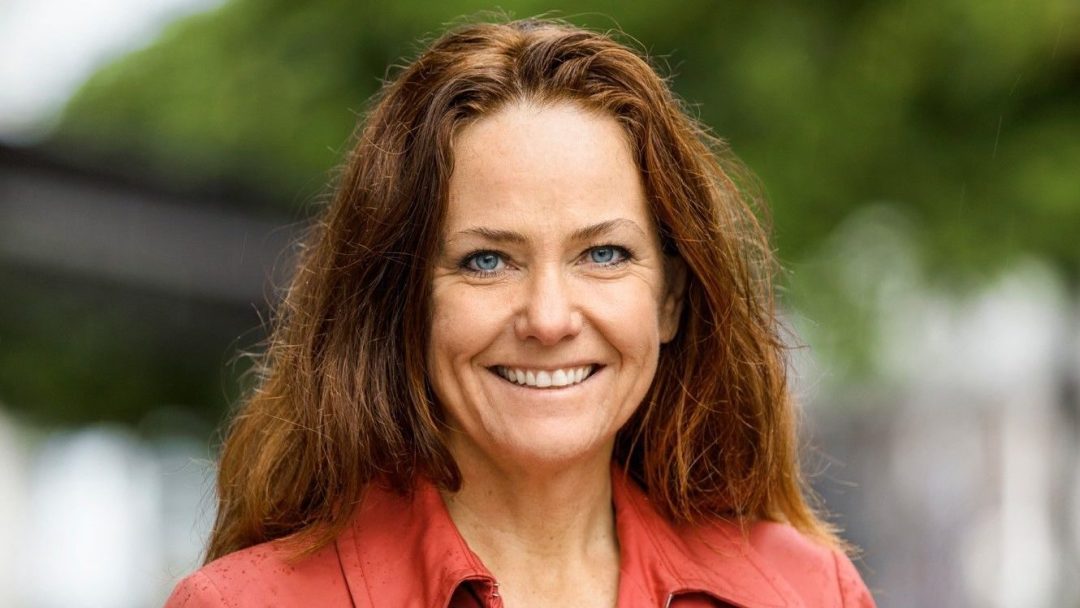
Heidi Sørensen, director of Oslo-s Climate Agency
Significant Impact on the Inventory
It’s essential that the construction and civil engineering sector make efforts to contribute to emissions reductions, given the City’s goal of reduce emissions by 95% across the city by 2030. The significantly lower noise levels from the construction site are a positive side effect that cannot be underestimated, especially for those working on the site. At the same time, such projects face plenty of challenges.
«First and foremost, it’s important to ensure the construction site has enough power. Then, it’s crucial to establish the charging infrastructure early, so the electric machines have charging options from day one,» says Mathias Kolsaker.
It requires a lot of energy to charge machines while other machines are in use on the site. Early planning and good dialogue with the grid company and the charging infrastructure provider are important.
It is no secret that operating an emission-free construction site affects the economy of the project. «In our case, we are fortunate to be running a rehabilitation project without extensive groundwork. Still, we see the need for 10-15% more machines to make up for the charging time.»
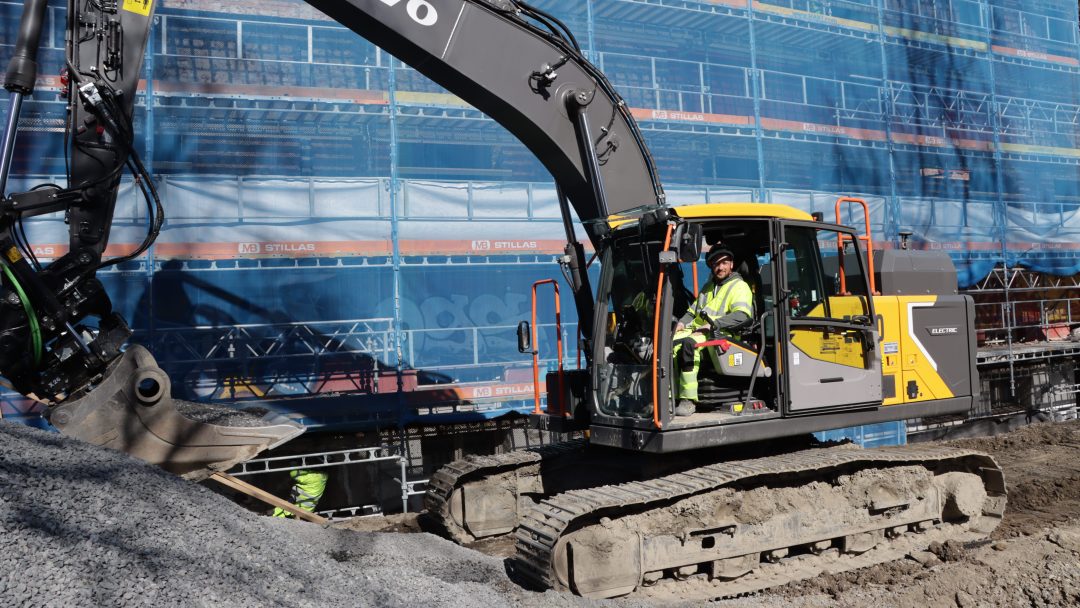
A construction site close to residential areas is fine when the excavators are electric.
Energy Efficiency = Climate Impact
When a large brick building is renovated, climate measures are considered in every room—literally. In addition to using electric construction machinery, the goal is to improve the building’s energy efficiency, so it will use significantly less energy in the future compared to before the renovation.
Most brick buildings in Oslo today have energy ratings of G or F. Heritage buildings, like Sophies Minde, can be difficult to upgrade to the highest energy rating because they cannot be fully insulated on the outside.
By using district heating for heating and primarily energy wells to meet the building’s cooling needs, along with additional insulation with insulating plaster and new windows, Sophie Minde will achieve an energy rating of light green B for the kindergarten and light green C for the district house.
Overall, the building’s energy requirement will be reduced by 61%, equivalent to approximately 2 million kWh per year.
This article was translated from Norwegian with the assistance of AI.
